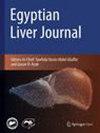Diagnostic and prognostic significance of tissue lncRNA HOTAIR and hexokinase 2 mRNA expression in patients with pancreatic ductal adenocarcinoma
IF 0.7
Q4 GASTROENTEROLOGY & HEPATOLOGY
引用次数: 0
Abstract
Pancreatic adenocarcinoma, recognized for its aggressive behavior and frequent late-stage diagnosis, imposes significant challenges in early detection and prognosis. This study aimed to evaluate the diagnostic and prognostic potential by measuring the expression levels of long non-coding RNA HOTAIR and the glycolytic enzyme hexokinase 2 (HK2) mRNA in both tumorous and adjacent non-tumorous pancreatic tissue samples (n = 25 each) using RT-qPCR. Results Both lncRNA HOTAIR and HK2 expression levels significantly increased in tumorous pancreatic tissues compared to non-tumorous tissue (P = 0.001). However, their levels in stage T2 and T3 showed no statistically significant difference (P = 0.01). lncRNA HOTAIR and HK2 expression levels positively correlated with each other (P = 0.001; r = 0.95); however, no significant associations were found with serum tumor markers CA19-9 and CEA (P = 0.01; r = 005; p = 0.1, r = 0.2). ROC analysis demonstrated the significant abilities of both lncRNA HOTAIR and HK2 expression levels to discriminate between tumorous and non-tumorous pancreatic tissues (AUC = 0.92 and 0.84, respectively) with 96% and 88% sensitivity, and 72% and 40% specificity, respectively, at optimal cut-off values of 1.12 and 0.84 relative expression units. Patients with elevated lncRNA HOTAIR and HK2 expression had shorter median survival (8 and 7 months, respectively), increasing the risk of adverse outcomes or recurrence 4–4.8 times (HR = 4.08, p = 0.07; HR = 4.8, p = 0.01), thus emphasizing their prognostic potential in pancreatic cancer. lncRNA HOTAIR and HK2 expression levels exhibit diagnostic potential in pancreatic tumors. Elevated levels of both markers correlate strongly with adverse outcomes, underscoring their prognostic value.胰腺导管腺癌患者组织 lncRNA HOTAIR 和己糖激酶 2 mRNA 表达的诊断和预后意义
胰腺腺癌是公认的侵袭性肿瘤,经常在晚期才被确诊,这给早期检测和预后带来了巨大挑战。本研究旨在利用 RT-qPCR 技术检测长非编码 RNA HOTAIR 和糖酵解酶己糖激酶 2 (HK2) mRNA 在肿瘤性和邻近非肿瘤性胰腺组织样本(各 25 份)中的表达水平,从而评估其诊断和预后潜力。结果 与非肿瘤组织相比,肿瘤胰腺组织中 lncRNA HOTAIR 和 HK2 的表达水平均显著升高(P = 0.001)。lncRNA HOTAIR和HK2的表达水平呈正相关(P = 0.001;r = 0.95),但与血清肿瘤标志物CA19-9和CEA无明显相关性(P = 0.01;r = 005;P = 0.1,r = 0.2)。ROC分析表明,在1.12和0.84个相对表达单位的最佳临界值下,lncRNA HOTAIR和HK2的表达水平都能明显区分肿瘤性和非肿瘤性胰腺组织(AUC分别为0.92和0.84),敏感性分别为96%和88%,特异性分别为72%和40%。lncRNA HOTAIR和HK2表达水平升高的患者中位生存期较短(分别为8个月和7个月),不良预后或复发风险增加4-4.8倍(HR = 4.08,p = 0.07;HR = 4.8,p = 0.01),从而强调了它们在胰腺癌中的预后潜力。这两种标志物水平的升高与不良预后密切相关,突出了它们的预后价值。
本文章由计算机程序翻译,如有差异,请以英文原文为准。
求助全文
约1分钟内获得全文
求助全文

 求助内容:
求助内容: 应助结果提醒方式:
应助结果提醒方式:


